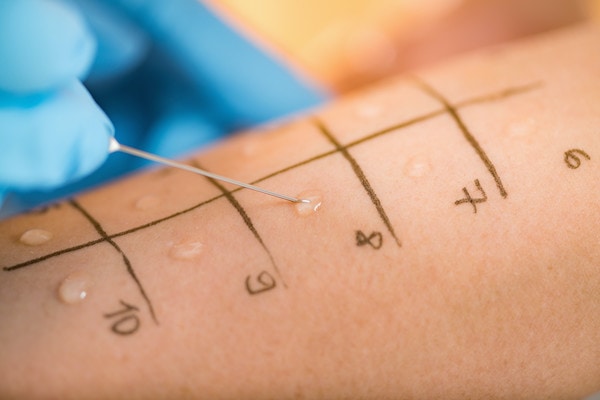EN 16524 Detection of Egg Residues in Pasta and Bakery
The European standard EN 16524 provides a comprehensive method for detecting egg residues in pasta and bakery products. This service is crucial for ensuring the safety and integrity of food products, especially those intended for consumers with allergies or dietary restrictions.
Egg allergy is one of the most common food allergies worldwide, affecting millions of people. Accurate detection methods are essential to prevent accidental consumption by individuals who need to avoid eggs. The standard outlines a procedure that ensures reliability and consistency in identifying egg residues at various stages of production and processing.
The methodology described in EN 16524 involves several key steps. Initially, the sample is prepared according to predefined protocols to ensure homogeneity and representativeness. This includes grinding the product into a fine powder if necessary. The next step is extraction, where the egg proteins are extracted from the sample using a suitable solvent.
The extracted material is then analyzed using immunoassay techniques, specifically the Enzyme-Linked Immunosorbent Assay (ELISA) method. This technique allows for the precise quantification of egg protein levels in the sample. The assay uses antibodies specific to egg proteins as a detection mechanism, ensuring high specificity and sensitivity.
The standard specifies detailed acceptance criteria for the test results. A positive result indicates the presence of detectable levels of egg residues above a certain threshold. This threshold is set to ensure that any detected residues are significant enough to pose a risk to consumers with egg allergies.
For quality managers and compliance officers, this service ensures adherence to regulatory standards and consumer expectations. R&D engineers can rely on it for product development and improvement, ensuring new formulations meet safety requirements before commercial release. Procurement teams benefit from accurate detection methods that help verify the integrity of raw materials used in production.
The standard's methodology is consistent with international best practices, aligning with ISO standards and other relevant guidelines. This ensures that the results are comparable across different laboratories worldwide, enhancing trust and confidence in the testing process.
Scope and Methodology
| Stage of Process | Description |
|---|---|
| Sample Preparation | The sample is ground into a fine powder if necessary. |
| Extraction | Egg proteins are extracted using a suitable solvent. |
| Analytical Method | ELISA technique with specific antibodies for egg detection. |
| Acceptance Criteria | Description |
|---|---|
| Positive Result | Egg residues above a specified threshold are detected. |
| Negative Result | No detectable egg residues in the sample. |
Eurolab Advantages
At Eurolab, we offer unparalleled expertise and precision in EN 16524 testing. Our team of highly skilled analysts ensures that every test adheres strictly to the standard's requirements. We utilize state-of-the-art equipment and follow rigorous quality control protocols to deliver accurate results.
We understand the importance of timely reporting for our clients. Our service guarantees quick turnaround times, allowing you to make informed decisions promptly. This is particularly beneficial in scenarios where product safety must be ensured immediately or when compliance with regulatory deadlines is critical.
Our commitment to excellence extends beyond mere testing; we provide comprehensive support and advice on how to interpret the results and implement necessary corrective actions if required. Our experienced consultants can help you navigate the complexities of allergen management and ensure your products meet all safety standards.
Quality and Reliability Assurance
At Eurolab, we prioritize quality and reliability in every service we offer. Our EN 16524 testing is conducted using internationally recognized methods and equipment calibrated to the highest standards. This ensures that our results are accurate and repeatable.
We maintain a robust quality management system that complies with ISO/IEC 17025:2017, ensuring that all processes are documented, reviewed, and improved continuously. Our laboratories are equipped with advanced analytical instruments, including spectrophotometers, chromatographs, and immunoassay systems, to provide the most precise results.
We also adhere to strict calibration and maintenance schedules for our equipment, ensuring that all tests meet or exceed the required accuracy levels. This commitment to quality is further supported by regular internal audits and external accreditation from recognized bodies.





